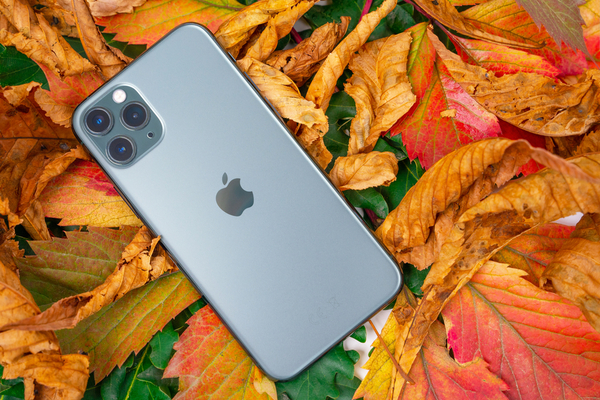First, do you even need an iPhone 12? If you have an iPhone 11 or iPhone 11 Pro, the 2019 models, the experts say you really don’t need to upgrade unless something is seriously wrong with your device (and it can’t be repaired by Apple). The iPhone 12 range introduces some new technologies, but there’s nothing that will drastically change your experience. This also holds true if you have the 2018 iPhone XS or iPhone XR, too. And, with older iPhone models, chances are your biggest problem is that your battery life has started to deteriorate. Instead of getting a new phone, you could consider replacing the battery. Your iPhone might feel like it’s brand new afterward.
But if you’re squeezing the last bits of life from your iPhone 6, or you just HAVE to have the latest and greatest, there are now four iPhones to choose from: The iPhone 12 Mini, iPhone 12, iPhone 12 Pro, and iPhone 12 Pro Max.
Wired.com reports that Apple has brought its Super Retina XDR (OLED) displays to every single model and has bumped up the resolution of the non-Pro models. They all have the same powerful A14 Bionic processor, Ceramic Shield glass protecting the display, Face ID, compatibility with the new MagSafe accessory system, and the same level of IP68 water resistance.
5G connectivity is a big selling point of these new iPhones, but don’t get hyped. 5G availability is still sparse in the US and doesn’t offer all that much over 4G LTE (yet). Wired.com has a 5G guide if you’d like to learn more. You can also use Apple’s comparison tool to see the differences between the models yourself.
- iPhone 12 ($829): If you’re going to take the plunge, experts say this is the iPhone to get. It has the same 6.1-inch screen size and the same resolution as the iPhone 12 Pro, and the OLED panel means you get more vibrant colors and deeper blacks than the LCD on the iPhone 11. There’s the usual main and ultrawide camera, and both now work with Apple’s Night mode to brighten images up in low light. It also lets you shoot in 4K HDR at 30 frames per second, giving videos a broader range of colors. The battery will mostly get you through a full day but not much more. Click here for the wired.com review.
- iPhone 12 Mini ($729):If you hate that phones have become so big, you’ll want the Mini. It’s 5.4-inch display is smaller than the iPhone SE Apple debuted earlier this year or any iPhone before the 6. That said, Apple has managed to stuff every iPhone 12 feature into this phone. Battery life is the only question mark. (We haven’t yet received a test unit.) It’s available for preorder on November 6, and shipping will start on November 13.
- iPhone 12 Pro ($999):The upgrades in the Pro over the regular iPhone aren’t as great as in previous years, but there are some enticing features for people who snap a lot of photos and videos, especially if you don’t want a big phone like the Pro Max. First, you get the extra 2X optical zoom camera to give you more versatility in your photography. Second, and perhaps most important, is the addition of a lidar scanner. It speeds up autofocusing in low light and enables Night Mode portraits. There’s support coming for Apple’s ProRAW format, which allows you to snap pics in a RAW format while also utilizing Apple’s computational photography. It’s capable of HDR video recording up to 60 frames per second, and it comes with a default of 128 gigabytes of storage as opposed to 64 GB on the other two. This phone is also made of stainless steel, which is a notch above the aluminum build of the cheaper iPhones, but battery life is about the same as the regular iPhone 12, lasting about a full day. Click here for the wired.com review.
- iPhone 12 Pro Max ($1,099):If you really want the best camera system from Apple, get the Pro Max. It shares most of the same specs as the Pro but with a larger 6.7-inch screen and battery. It goes a step further with an image sensor that’s 47 percent bigger for the main camera, which Apple says will offer an 87 percent improvement in low light. It also uses the company’s new sensor-shift stabilization tech that will likely offer better-stabilized videos. Even the telephoto zoom camera is different, offering 2.5X optical zoom to get you closer to your subject. It’s for big-phone lovers and shutterbugs. It’s available for preorder on November 6.
Note: These aren’t the only iPhones Apple sells. You should also know that Apple no longer includes EarPods or a power adapter in the box. These new iPhones come with a USB-C to Lightning cable, so if you do not have an adapter with a USB-C port (like the one for MacBooks), you’ll need to buy one.
If you’re going to fork over that kind of cash, you’ll want to protect your investment with a really good case. Most case manufacturers (except Otterbox) do not have MagSafe-compatible cases yet. If you buy Apple’s MagSafe wireless charger, it will be able to recharge through most of these cases just fine, but the magnet won’t sit as securely compared to a MagSafe case. The MagSafe Wallet from Apple also does not stay attached to most non-MagSafe cases. If you plan to buy MagSafe accessories down the road, it’s a good idea to wait for more MagSafe cases to come on the market, or you can buy one from Apple now.
If you choose to go with the iPhone 12 Mini or the iPhone 12 Pro Max, know that these models aren’t available to order until November 6, and they ship November 13.
—
Photo Credit: Masarik / Shutterstock.com
